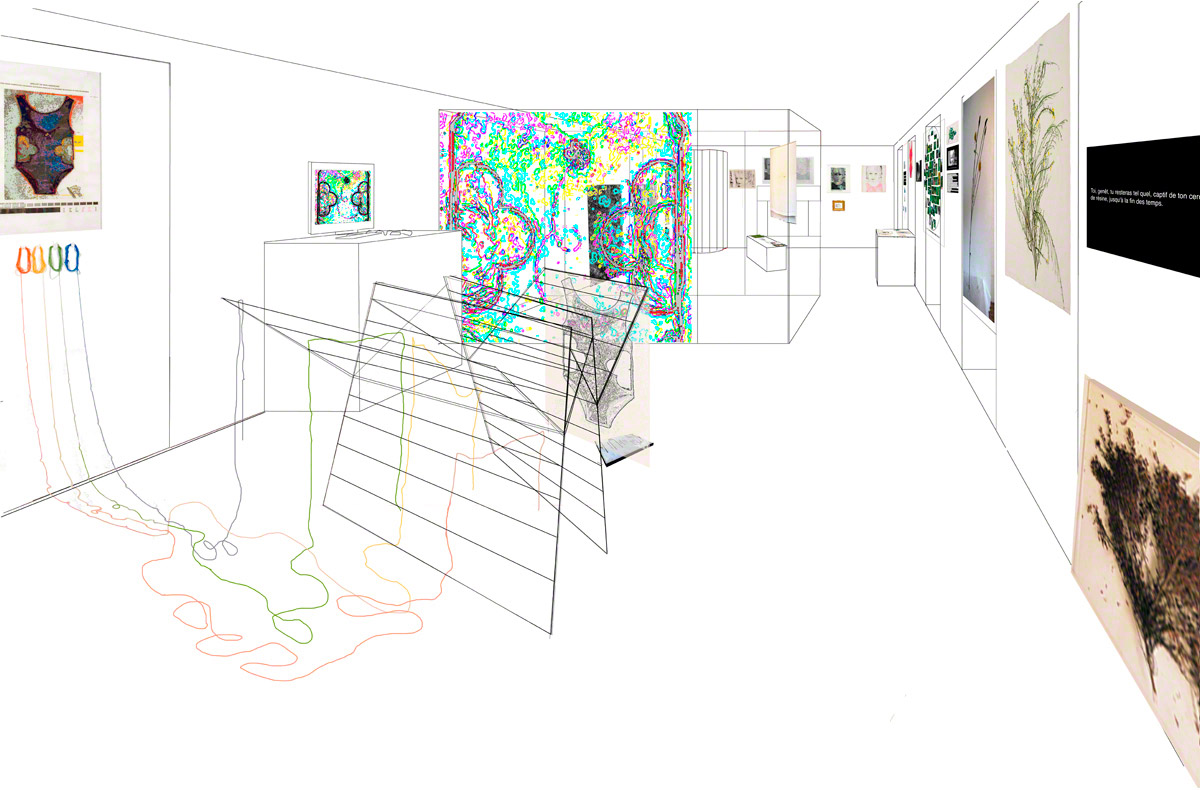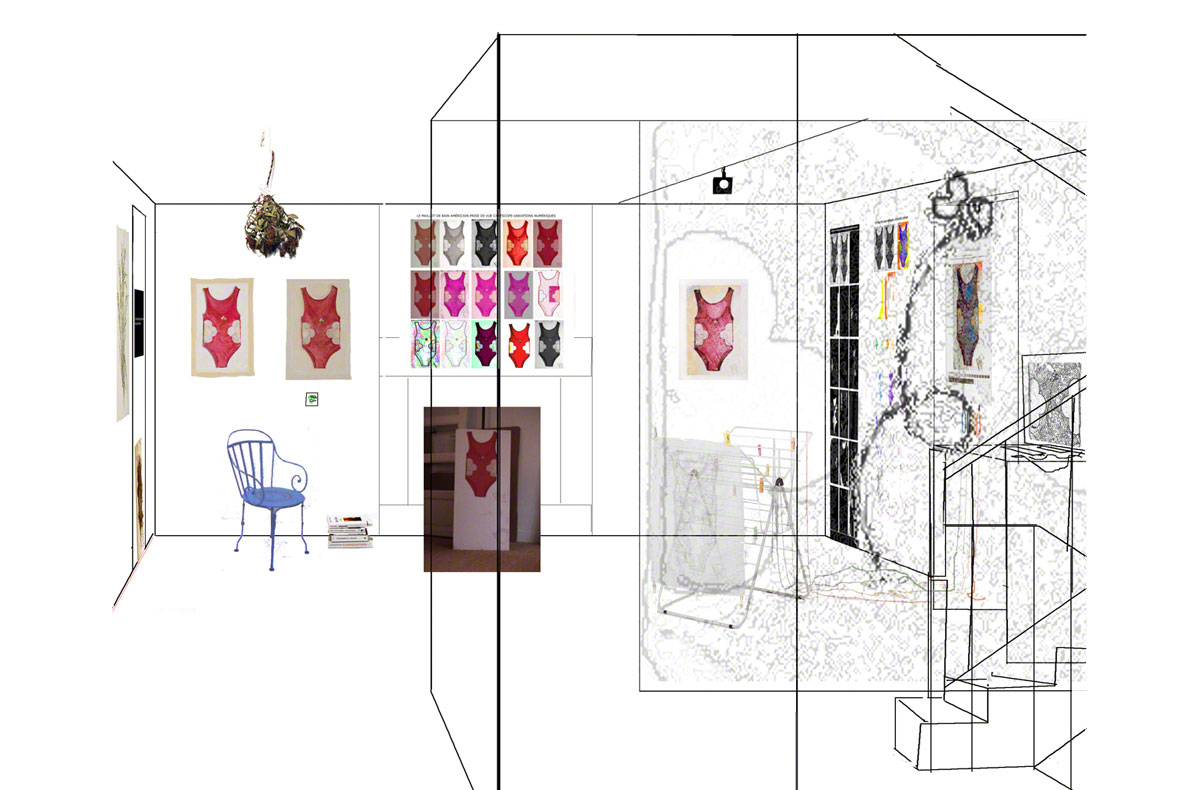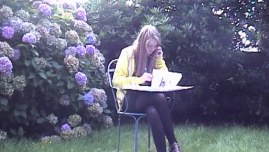Proposition for arranging the space at the Maison de la Fontaine in Brest.
Brest, the town where Alix lives, was almost entirely destroyed during the allied bombings of World War II. Although – or maybe because – the architecture in Brest is focused firmly on the future as if the architects wanted to annihilate the past, it is there to remind us that the town was in fact rebuilt from and about that trauma.
The Maison de la Fontaine is a vestige of the « Old Brest », the one from before 1944. Alix’s mother lived a few steps from that house as a child.
I felt it was relevant to virtually arrange the space of the « American Bathing Suit » project in the Maison de la Fontaine and to infuse it with elements that belong to that time in the history of Brest (audiovisual archives from the Institut National de l’Audiovisuel mentioning the destruction of the town during the bombings, an interview Jacques Prévert gave the Office de Radiodiffusion-Télévision Française in 1964 during which he says about Brest and its destruction: « war, what a load of crap »).
The savagery created by strife inbetween men and nations is entertained by our fears. Today, 60 years after World War II, 50 years after the Algerian War, what can we say about our fears?
Since I was born in 1962, I am part of a generation that has never known war directly. Still, the French army itself is involved in several conflicts that we hear about in the media.
There is a black screen blocking the window in the alcove on the Explorers Garden side. A disk is cut out of that screen, thus opening it at eye level. A spyglass – the military ancestor of Galileo’s refracting telescope – is set on a tripod facing that opening and allowing the onlooker to contemplate the old military harbor and beyond towards the sea, towards the far-off, towards the possible.
Time period
March 2013











